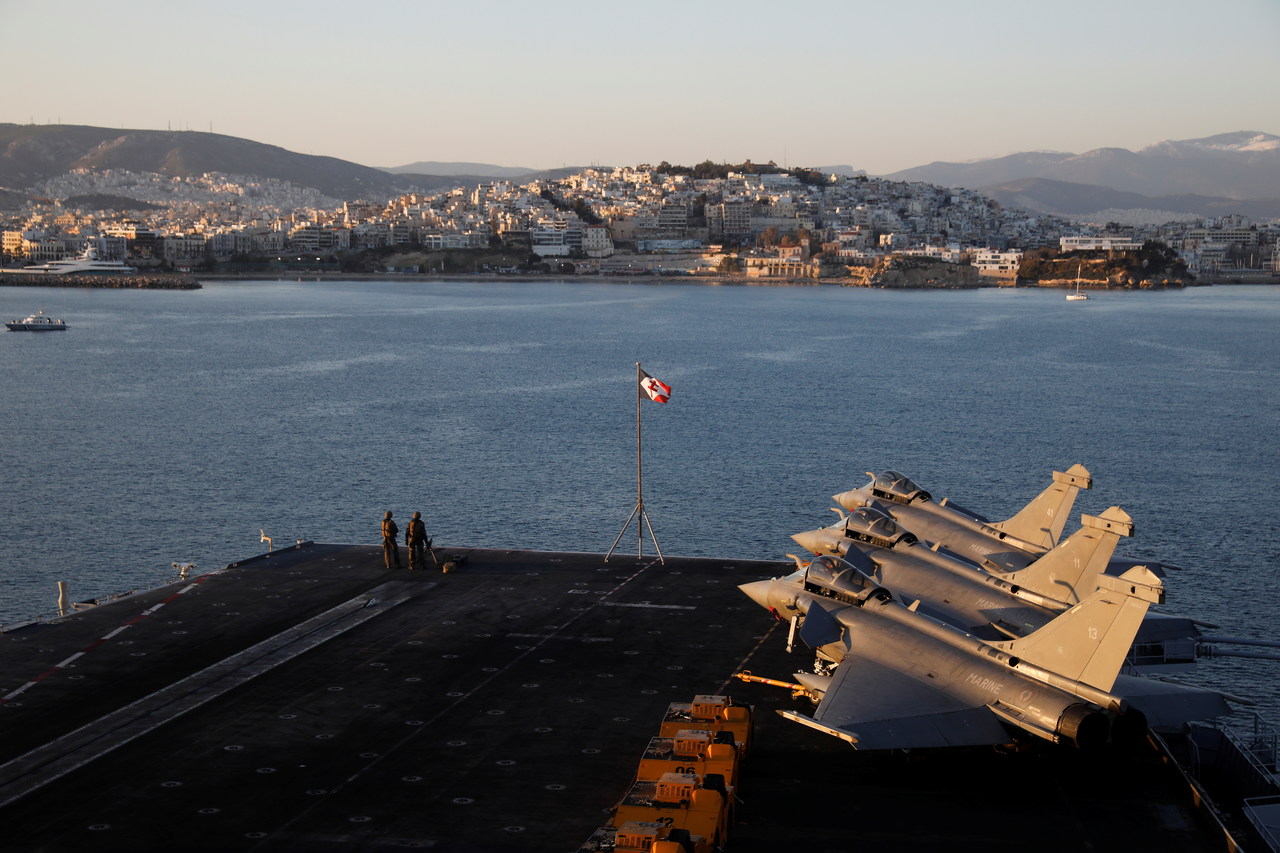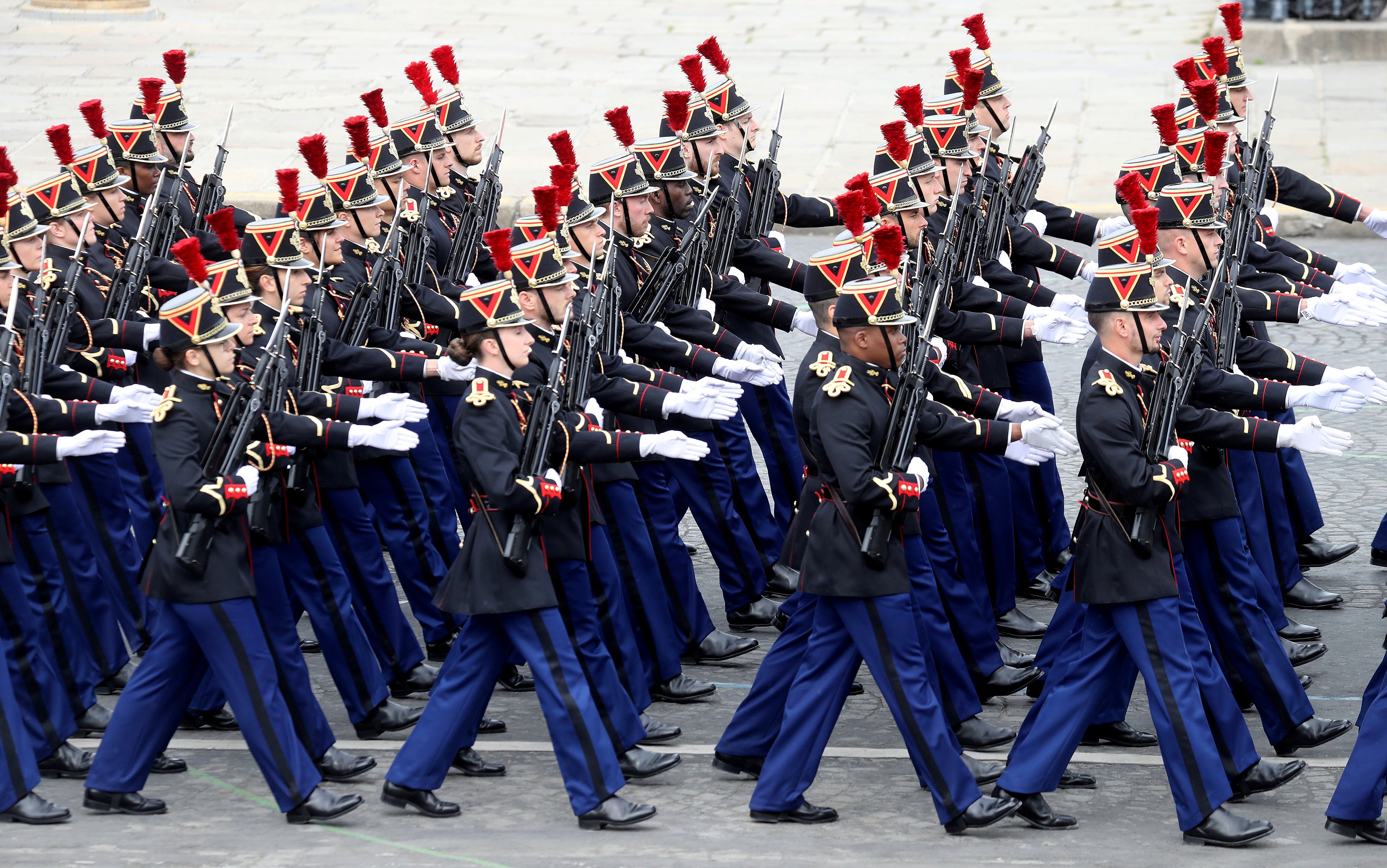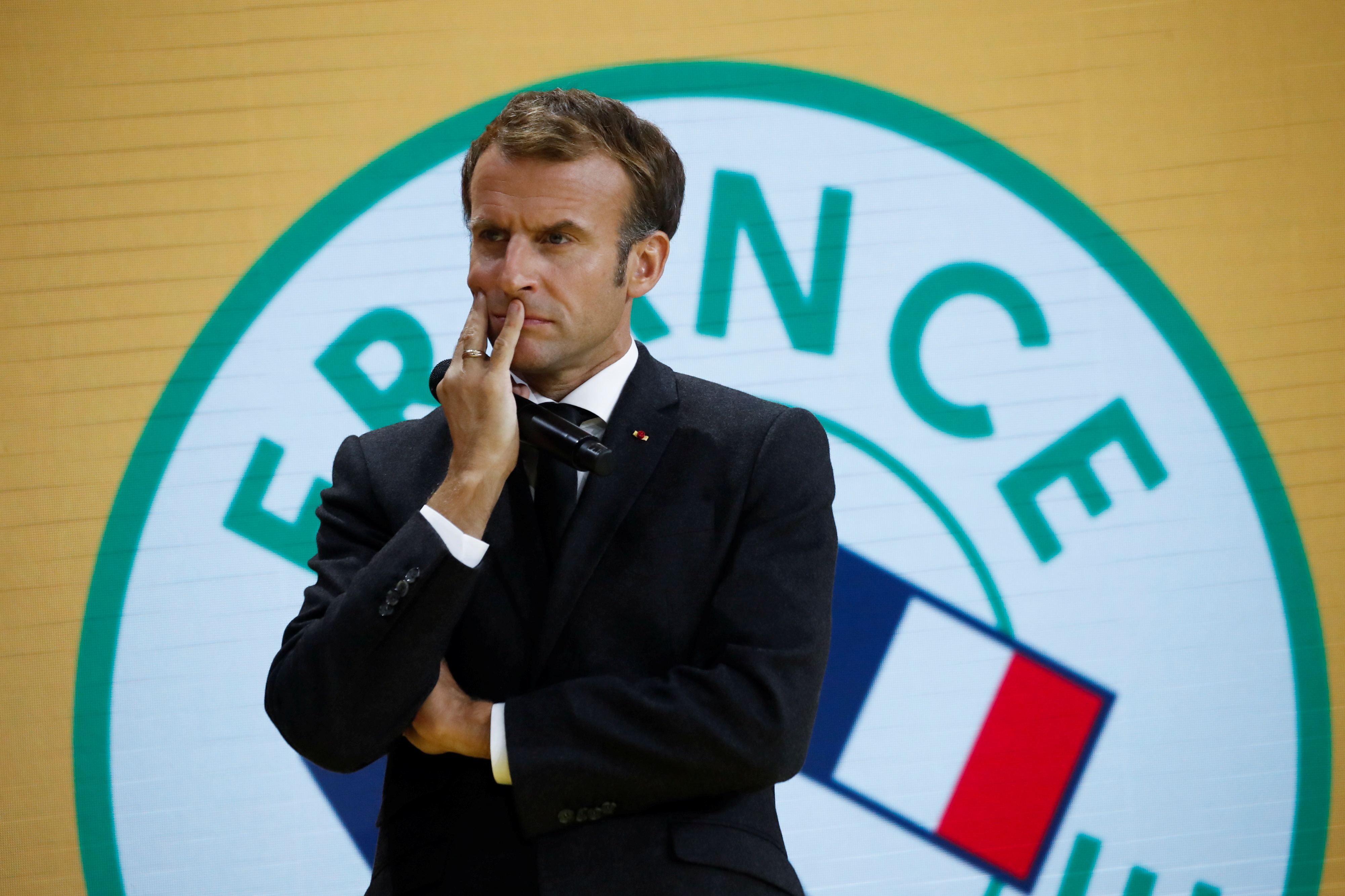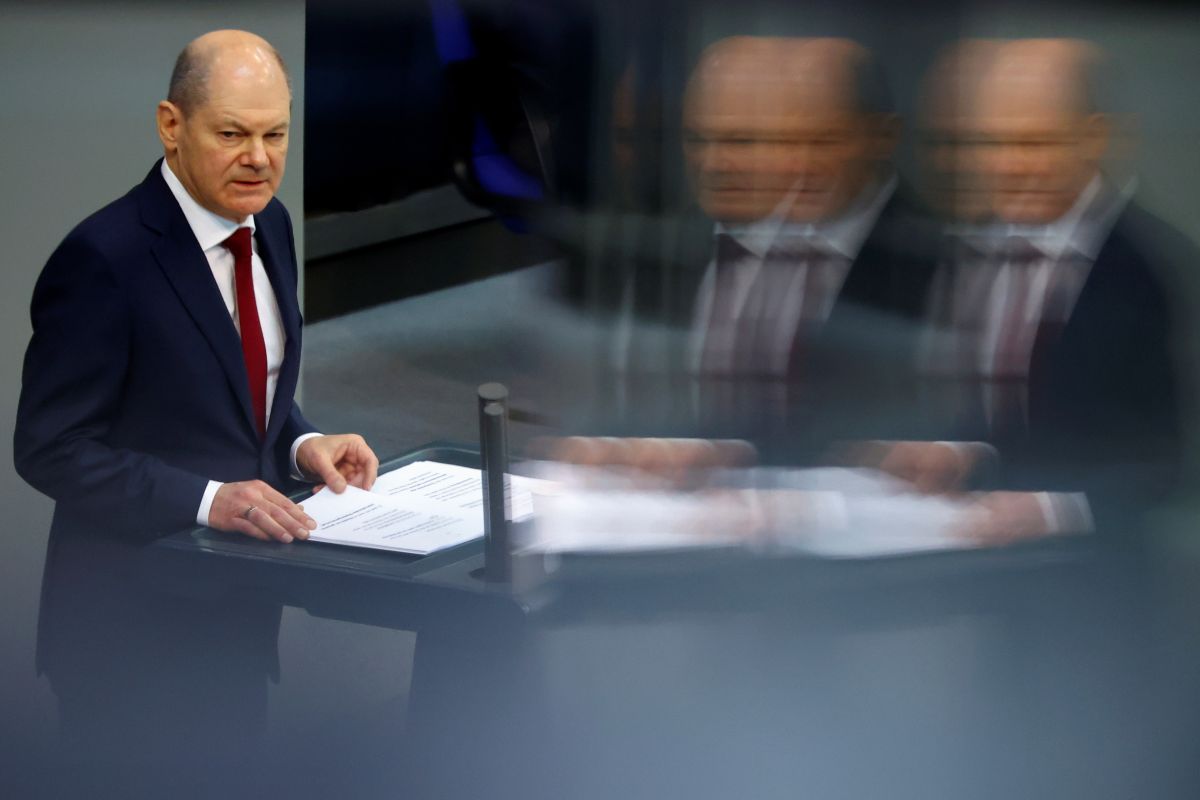In the Jumble of Priorities: French Defence Policy until 2030
President Emmanuel Macron’s outline of the Military Programming Law (LPM) for 2024-2030, presented on 20 January, assumes a nominal 30% increase in spending compared to 2019-2025. While Russia’s invasion of Ukraine and the need to prepare the armed forces for high-intensity combat are cited as the reasons, strengthening French partnerships in the Indo-Pacific, the Middle East, and the Mediterranean remain an even more important goal. Geographic location, nuclear deterrence, Germany’s Zeitenwende and Poland’s military ambitions mean that the French authorities do not consider the threat from Russia to be immediate.
 COSTAS BALTAS / Reuters / Forum
COSTAS BALTAS / Reuters / Forum
The purpose of the LPMs, which have been enacted since 1958, is to ensure the stability of investment in national defence regardless of political considerations. They are also supposed to provide industry with a guarantee of predictability of state policy and the orders it places. Critics believe that starting in the 1990s, under the pretext of rationalisation, the LPMs hid a consistent decline in military spending. The breakthrough came in 2014-2016 when, influenced both by the terrorist threat and decisions taken by NATO after Russia’s annexation of Crimea, France increased defence spending for the first time since the end of the Cold War. Signed by Macron in July 2018, the LPM for 2019-2025 amounted to €295 billion and allowed the country to gradually reach 2% of GDP in arms spending.
LPM Priorities for 2024-2030
The draft of the new LPM assumes spending of €400 billion. An additional €13 billion is to be received by the military through the sale of real estate and radio frequencies. However, inflation will limit the real increase in outlays over the previous LPM by about €30 billion. The law was prepared based on diagnoses of the 2022 National Strategic Review (RNS), which was published after the Russian invasion of Ukraine. The review sets as many as 10 goals, some of which are aimed at the armed forces (modernising deterrence forces, expanding cyberwarfare, regaining combat capabilities in high-intensity symmetric conflict), some at the political leadership of the state (maintaining credibility in NATO, expanding European defence and strategic autonomy, strengthening partnerships with EU and non-European countries), and others at the arms industry (accelerating and increasing production).
In the annual speech to the French Army on 20 January, Macron singled out four of the goals as key to the new LPM. He identified the strengthening of deterrence forces as such, as they distinguish France in Europe and are the “core of sovereignty”. Initiated with the previous LPM, these include the continuation of the construction of four submarines and the renovation of missiles and nuclear warheads. The authorities also want to double the budget for military intelligence and counterintelligence (DRM, DRSD) and “the ability to respond to cyber-attacks”.
Another goal identified by the president is to prepare the military for high-intensity operations, as opposed to the expeditionary missions in Africa carried out so far. In addition, in exchange for new orders, the authorities will expect flexibility from arms companies in terms of the pace of delivery and scale of production. This is especially true for the replenishment of ammunition stocks and armaments currently being transferred to Ukraine. For example, the production rate of Caesar cannon howitzers, 18 of which were sent in support of the fight against the Russian aggression, is to be raised from four to eight per month. The ministry also wants to double the production rate of Mistral anti-aircraft missiles from 20 to 40 per month.
The €18 billion (36%) increase in funding for ground troops is intended to strengthen them qualitatively (adaptation to modern battlefield conditions and digitisation). In quantitative terms, Armed Forces Minister Sébastien Lecornu announced the maintenance of operational ground forces personnel at 77,000 troops. The political authorities did not take into account the demands by the command of the ground forces to increase their numbers enough to carry out combat operations on the Eastern Flank on their own or even to replace the U.S. in the role of leader of a coalition responding to aggression in the area.
The armoured forces will be disappointed, too. With about 400 Leclerc tanks currently at its disposal (France had about 1,500 tanks at the end of the Cold War), the army cannot hope to increase its inventory anytime soon. Leclercs are no longer in production and Macron has no intention of sourcing equipment abroad. The ground troops have been ordered to wait for the results of the Franco-German tank project (MGCS), which will not be ready before the 2040s. The AMX-10 heavy reconnaissance vehicles, 14 of which France is handing over to Ukraine, are to be replaced by the EBRC Jaguar.
The LPM provides significant support for drone research and a massive purchase (€5 billion is to fund, among other things, the production of 3,500 small drones), work on a new aircraft carrier (important in the context of Macron’s mentioned third priority of protecting overseas territories, freedom of navigation, and “common areas”), or equipping the air force with additional Rafale fighters to replace the Mirage 2000.
The final goal of the new LPM is to strengthen defence partnerships. In Europe, Germany comes to the fore because of its indispensable role in building European defence capabilities (this is especially true of the MGCS and the multi-role aircraft project, FCAS). The LPM is also intended as a response to Germany’s Zeitenwende and fears that France may lose its advantage of military superiority over the EU’s economically strongest country. Britain’s role as a nuclear power, a state with a military presence in Africa and the Indo-Pacific, and a participant in joint arms programmes with France, is also paramount. Greece, which is linked with France by a defence partnership facing off against another NATO member, Turkey, will be important as well.
Outside Europe, the countries that will matter most, according to the new LPM and RNS, are those that place orders with French arms companies and enable the implementation of the French strategy towards the Indo-Pacific. These include India (basing French warships), Indonesia, the United Arab Emirates (hosting French military bases), and Egypt (control of the Suez Canal).
Consequences for NATO’s Eastern Flank
In the absence of an imminent risk of a Russian invasion, the security of French territory is to continue to be guaranteed by nuclear deterrence. Although Macron claims that France’s nuclear capability has a “European dimension”, he wants to encourage Germany to support EU “strategic autonomy” (France does not participate in NATO nuclear planning). Moreover, the existence of a deterrent force allows France, according to Lecornu’s assessment, to maintain its status as a “balancing power”, including pursuing a different policy toward Russia than its Eastern Flank allies.
A warning signal for the latter is the unwillingness of the French to expand the armoured forces and ground troop numbers. France instead aims to maintain the Allies’ trust through the country’s status as a framework country for a NATO battalion battlegroup in Romania, military cooperation with Estonia, and the participation of French fighter aircraft in patrols over Poland. Contrary to the views of the ground forces command, Macron also declared that France will be able to field up to 20,000 troops for NATO’s collective defence needs.
Conclusions
The war in Ukraine makes it easier for Macron to justify the need for increased military spending. This will be needed especially during the parliamentary debate on the LPM, as some on the left will attack the president for excessive military expenditures and cutting social welfare. On the other hand, deputies of the right-wing Les Républicains party will expect an increase in funding for selected defence programmes in return for agreeing to support the bill. The bill may be subject to more changes than in previous years when the president had a parliamentary majority, thus its adoption by 14 July is uncertain.
Regardless of modifications to the LPM, defence against potential Russian aggression will not be a priority for France, as evidenced by the direction of the French armed forces’ expansion, which focuses on threats in the Indo-Pacific and Mediterranean. To counter arguments of a lack of interest in NATO’s Eastern Flank—where European security is most at risk at the moment—France will maintain a limited military presence in Romania and Estonia as a signal of Alliance credibility.
In Europe, France will strengthen partnerships with selected allies to expand joint defence capabilities in the event of a NATO decision-making crisis (e.g., amid a Greek-Turkish conflict or tensions in North Africa). Germany’s role is crucial to the realisation of arms industry projects that are important to France. France will also try to convince Germany to modify its traditionally pro-Atlantic policy in favour of building European defence sovereignty.
Polish-French cooperation on security and defence is not expected to intensify, although joint ventures are possible. French industry, on the other hand, will certainly show interest in participating in the modernisation of the Polish military.





